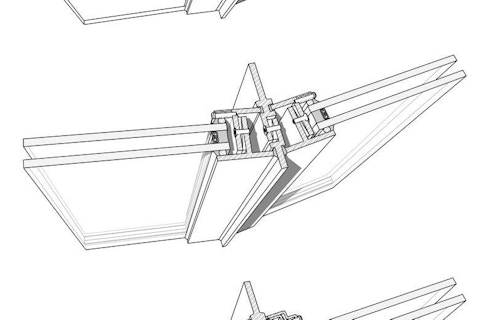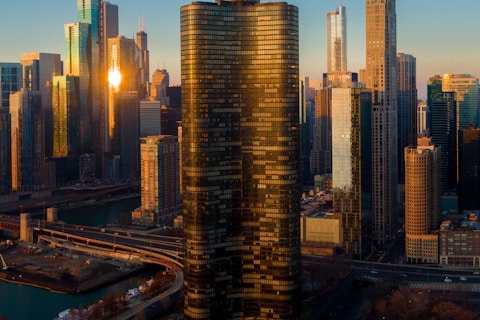Fenestration Challenges
The May SKINS newsletter focuses on fenestration, that is – windows, curtainwall, storefront, glazed doors and skylights. There are very few structures that are built without these elements, not just because they are so crucial for occupant health and well-being, but because glass has become such a tremendously flexible and aesthetically pleasing design material. However, fenestration is typically the weakest link thermally in the building envelope. The performance of fenestration in a building can be the difference between it being energy efficient or an energy hog, between its occupants being comfortable or uncomfortable, and between one that can keep people alive during a power outage during excessive heat or cold events and one that cannot. High-performance fenestration is also key to getting to net-zero carbon buildings, managing grid peak loads, and the transition to all-electric heating and hot water. So, it is fitting that we focus on them in the May issue of SKINS.
Our first article is ten years old, but it is important because it comes from researchers at the Lawrence Berkeley National Laboratory (LBNL) working on new ideas to improve future window performance. Their goals were focused on better efficiency— identifying existing state-of-the art window technologies that delivered lower U-factors and new materials and techniques to provide yet further improvement. The second article is one that I wrote ten years later. We have added it to demonstrate that many of those state-of-the-art technologies identified by LBNL now have track records of over a decade – and in some cases much longer. While they have been widely adopted elsewhere in the world to drive energy efficiency, many are yet to become business-as-usual in North America. The article explores why this is the case and what can be done to change the paradigm. It is a call to action to enact transformative codes and incentive structures addressing carbon, resilience and human health in the built environment.
Our third article links to the Whole Building Design Guide, a guide published by the National Institute of Building Sciences (NIBS). NIBS produced this guide under contract from the Army Corps of Engineers, the Naval Facilities Engineering Command, the US Air Force, the General Services Administration, the Department of Energy, and the Federal Emergency Management Agency. To make it easy to access, it is available as a “virtual” information source on the NIBS website and can be used by private owners and their designers.
The next article describes an important new reference procedure and tools for passive house projects that were developed by RDH Building Science and Peel Passive House Consulting. Passive house design drives an envelope first philosophy, pushing ultra-low U-factor fenestration involving triple pane glazing and wide thermal barriers in the frame. This reference procedure and tools are crucial to lowering the barriers to passive house implementation in North America, as they overcome the issue created because the Passive House Institute (PHI) uses European window performance standards. These differ from those used in North America developed by the National Fenestration Rating Council (NFRC) and which utilize the LBNL suite of software tools (WINDOW, THERM, OPTICS). The new procedure uses the widely utilized THERM software, to calculate the thermal performance of windows according to PHI requirements and is approved by PHI for passive house certification. Links are provided to both the reference method and tools, as well as to THERM, which can be downloaded for free.
Since its inception in 1989, the NFRC has been a valuable resource to homeowners by providing fair, accurate, and credible energy performance ratings of fenestration products. The NFRC label is widely respected and takes the mystery out of window performance. Last month, after several years of committee work, of which I was a part, NFRC has approved a new program to rate commercial fenestration, which will provide a similar service to the commercial building design and construction community. More details on that to come! In this SKINS issue, we feature the assessment NFRC has done on the carbon emissions avoided by their ratings of windows, doors, and skylights.
Finally, we turn to indoor air quality and daylighting and views and their effects on students’ health, well-being, development, and safety. Fenestration can play a crucial role in promoting a safe and healthy school environment using operable windows that deliver natural ventilation as well as essential daylight and views. Our featured Harvard T.H. Chan School of Public Health Report demonstrates the challenges and need for remediation in many of our schools today. Last but not least, author and architect Lisa Heschong addresses the critical need for daylighting and, especially, views in an excerpt from her recent book: Visual Delight in Architecture: Daylight, Vision and View. We look forward to hearing more from her at the World Congress in Los Angeles, where she will be one of our keynote speakers. There is so much more to say about fenestration, but for now, enjoy the May SKINS!
Let us know what you think! You can reach us at skins@facadetecontics.org.
Best regards to all,
Helen Sanders
FTI Chair and Codes & Advocacy Committee

The SKINS Team:
Mic Patterson, Facade Tectonics Institute
Executive Editor
Val Block, Facade Tectonics Institute
Associate Editor
Brienna Rust, SGH
Christopher Payne, Gensler
Content Editors
Nick Carrillo, WWCCA
Event Calendar Editor
Alberto Alarcon, Kuraray
Event Calendar Editor

Helen Sanders, PhD
General Manager
Technoform North America
Looking for something specific?
Search our extensive library.
FTI’s SKINS email is the central source for the latest in building skin trends and research.
All emails include an unsubscribe link. You may opt out at any time. See our privacy policy.









